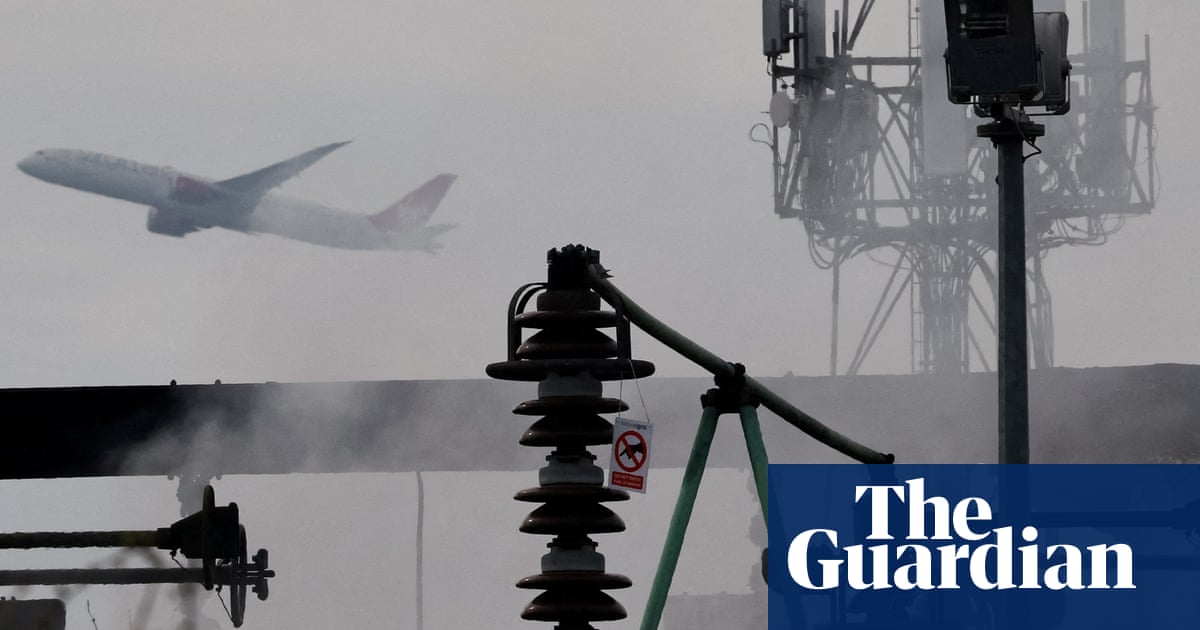The root cause of thesubstation fire that shut Heathrow airportin March was a preventable technical fault that National Grid had been aware of seven years ago but failed to fix properly, investigators have concluded.
The final report by the National Energy System Operator (Neso) into the incident found said the fire that cut power to the airport, affecting more than 1,350 flights and almost 300,000 passengers, was “most likely” caused by moisture entering the insulation around wires sparking the electrical fault.
The state-owned body said its investigation had found thatNational Grid– the owner of the substation that caught fire, which also cut power to 67,000 homes – had been aware of the issue in the bushing, a structure through which current flows in and out of a transformer, in 2018.
“An elevated moisture reading in the bushing had been detected in oil samples taken in July 2018 but mitigating actions appropriate to its severity were not implemented,” the report said. “National Grid has since initiated an end-to-end review of its oil sampling process, with a view to ensuring that it is robust.”
In response to the findings,Ofgem, the energy regulator for Great Britain, has opened an investigation into National Grid for what it called a “preventable technical fault”.
Ofgem said it would review whether National Grid complied with legislation and licence conditions relating to the “development and maintenance” of the electricity system at North Hyde.
It has also commissioned an independent audit into National Grid’s critical infrastructure assets and their status.
Ofgem said that the aim was to identify whether the “failings identified in Neso’s report … were a one-off in nature, or more systemic across the National Grid estate”.
Akshay Kaul, the director general for infrastructure at Ofgem, said: “The North Hyde substation fire resulted in global disruption, impacted thousands of local customers, and highlighted the importance of investment in our energy infrastructure.
“We expect energy companies to properly maintain their equipment and networks to prevent events like this happening. Where there is evidence that they have not, we will take action and hold companies fully to account.”
Neso said that using forensic analysis from National Grid and the London fire brigade it had found evidence of a “catastrophic failure” on one of the transformer’s high-voltage bushings at the 57-year-old power substation that caused it to catch fire.
A transformer bushing provides insulation for electrical current to flow safely and is typically made from materials such as porcelain, resin or oil-impregnated paper.
Heathrow’s private electricity network took hours to power up again after the outage, even as two nearby substations continued to operate as normal.
Europe’s largest airport took a further seven hours to open after the power was restored, according to the report, meaning flights were disrupted for almost 24 hours after the fire broke out.
However, three datacentres that lost power in the incident were able to continue operations through the use of backup generators.
Sign up toBusiness Today
Get set for the working day – we'll point you to all the business news and analysis you need every morning
after newsletter promotion
Neso’s review, which looked at 900 pieces of evidence, found that Heathrow’s internal estimate of the time it takes to reconfigure its electrical network in the case of the loss of one of its three supply points is 10 to 12 hours.
“This was less well-known by those outside the technical team withinHeathrow airport,” the report said. “And it was not known to the energy companies.”
The review also found that energy network operators “are not generally aware” whether customers connected to their networks are designated as critical national infrastructure (CNI).
“There is currently no explicit cross-sector requirement on CNI operators to ensure appropriate continuity of operations in response to power disruption,” Neso said.
Fintan Slye, the chief executive of Neso, said that despite the power outage and closure of Heathrow being “hugely disruptive” all parties involved “responded quickly and professionally”.
However, the incident has been hugely embarrassing for Thomas Woldbye, the airport’s chief executive, who has expressed his “deep regret” atbeing uncontactable and sleeping through the power outage.
Woldbye slept through two emergency notification calls and “several” phone calls from Heathrow’s chief operating officer, Javier Echave, in the early hours of the morning after the fire cut power to the airport.
“A combination of outdated regulation, inadequate safety mechanisms, and National Grid’s failure to maintain its infrastructure led to this catastrophic power outage,” a spokesperson for Heathrow airport said. “We expect National Grid to be carefully considering what steps they can take to ensure this isn’t repeated.”
